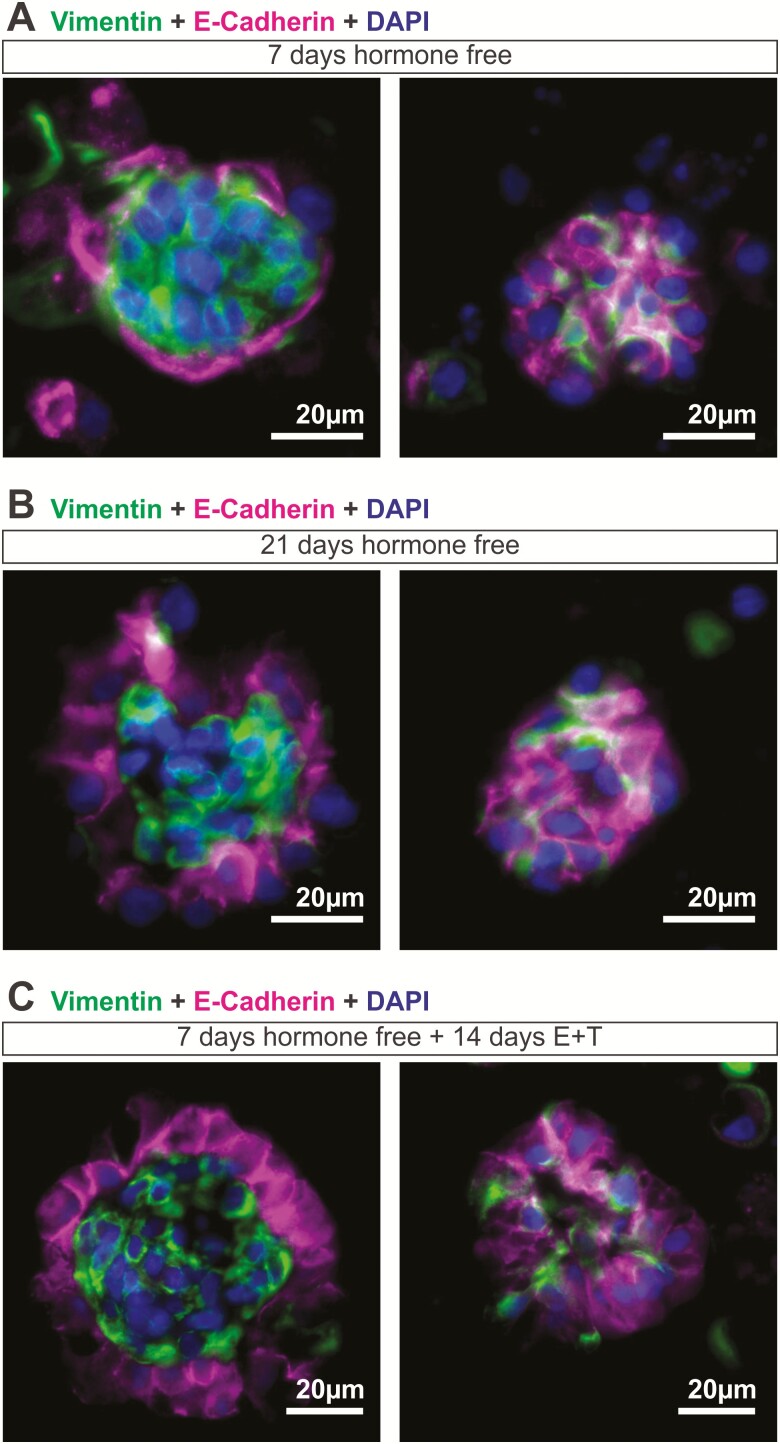Figure 3.
Hormonal effects of organoid architecture. Endometrial organoids were cultured in a (A, B) hormone free environment or (C) with the normal stepwise hormone treatment and immunofluorescent staining for vimentin (stromal) and E-cadherin (epithelial) was done at (A, C) 7 days postseeding and (B) 21 days postseeding. (A) At 7 days hormone-free, most organoids appeared to have stromal and epithelial cells intermingled within the organoids (left panel), with only 5/28 organoids (obtained from 3 patients) exhibited epithelial cells lining the outer surface of the organoid (right panel). (B) 8/24 organoids (obtained from 4 patients) established distinct structural organization when cultured for 21 days in a hormone free environment (right panel) while the remainder stayed intermixed with epithelial and stromal cells (left panel) (C) 27/34 organoids (obtained from 4 patients; left panel) exhibited structural organization with a clear distinction of epithelial and stromal layers when treated with normal levels of estradiol and testosterone for 14 days.

